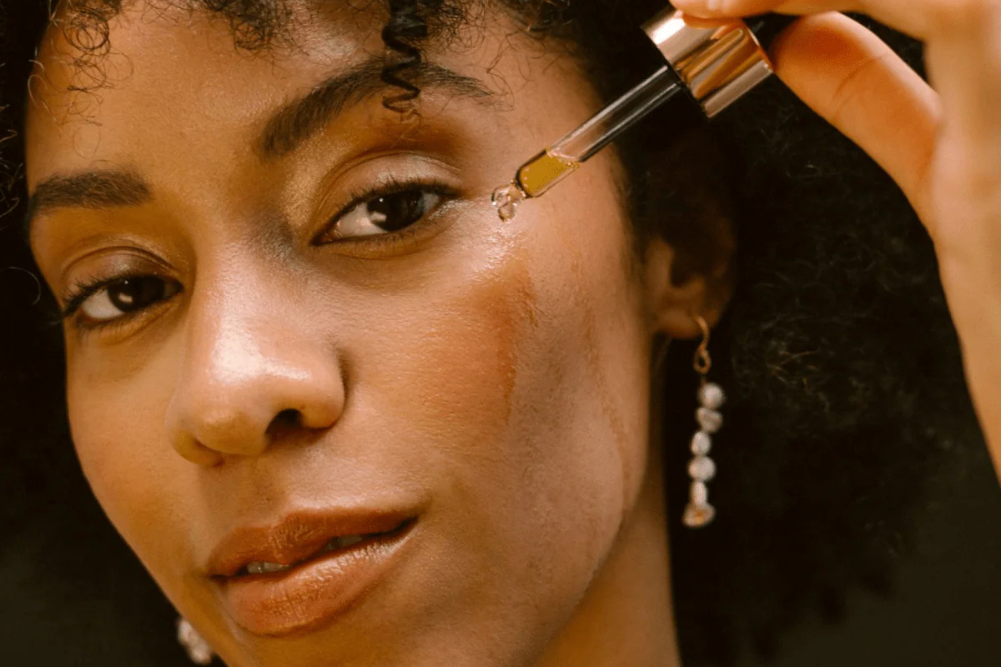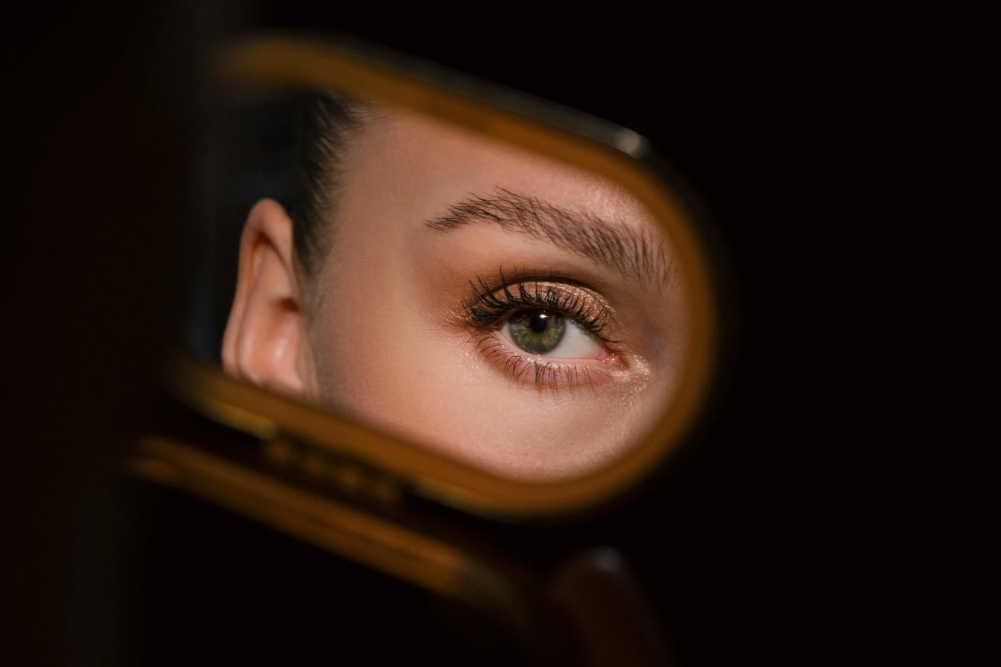Beauty secrets of the East
Thousands of years ago, gifts from the natural world, blended with a sprinkling of spirituality, were brewed into ancient Chinese healing recipes, tried and tested by the great emperors and empresses. Centuries on, the dual powers of nature and energy still form the foundation of eastern spa treatments, which remain among the world’s most popular approaches to health and beauty. While the philosophy of finding wellness in nature once stretched as far as the West, it’s in the East where it has thrived, withstanding the ascent of modern medicine through generations of traditional practice and devotion.
In the present-day Orient, the quest for Beauty and wellbeing is still decadently prioritised as a reward for a hardworking life and spas and healing centres are seemingly on every corner. As I took to the streets of Hong Kong in search of the enduring wisdom behind these holistic elixirs, I discovered they all share the same core principle: achieving a balanced energy flow within the body and a harmonious relationship between mind, body and spirit.
The energy of life
There is an ancient Chinese proverb that says by the age of 40, the mind shows on the face. This centuries-old belief still reigns across the orient; you cannot achieve outer radiance without first ensuring inner wellness. It all begins with the cardinal icon of Eastern philosophy, an energy force known as qi. Conceptions of qi date back to the earliest recorded times of Chinese thought, and are forged on the conclusion that life, activity and the environment are intrinsically linked and that the human body is a mini universe, comprising interconnected systems that continually work to sustain a balance within the body.
Qi drives this force and within us there are two fundamental types: congenital qi is the life force we are born with and is essentially limited, comprising our basic constitution. Acquired qi is derived from our daily lifestyle habits and changes, depending on the foods we eat, the air we breathe, our balance of emotions and so on. These moving energy forces travel along invisible internal highways called meridian lines, which can become congested when the balance of yin and yang is disturbed.
The quest for balance
In a world comprising natural dualities (for example, dark and light, male and female, good and evil), many Chinese believe the mind, body and spirit make a delicate circle of balance between two opposing and yet inseparable forces called yin and yang. While all living things contain both elements, an abundance of yin is traditionally manifested in a cold, slow, reserved or passive person, and a dominant yang has a tendency to cause overheating, sensitive skin, frustration and an inability to relax. To maintain a healthy flow of qi, these dual forces need to be kept in a constant condition of balance, otherwise blockages form on the meridian lines, which can lead to disease, emotional or physical pain and a tired or unattractive appearance.
The third component of the tri-theory of ancient Chinese healing commonly practised in spas in Hong Kong is the balancing of the five elements, sometimes called the “five movements” or “five phases”. These are wood, fire, earth, water and metal and we all contain multiple influences of each. As with yin and yang, the objective is to master a combination of all five elements equally, though this is rarely achieved. The five elements live in a constant state of transformation, channelled by our energy and lifestyle influences, including seasons, weather, colours, food, times of day and sleep habits.
While Hong Kong spas and healing centres vary dramatically in price and quality, most offer treatments that focus on rebalancing yin and yang and the five elements, while removing blockages in the meridian lines. Sensory tests involving smelling a series of element-based oils can determine the current state of balance and which phases are in need of replenishing. The entire treatment is then adjusted to meet this goal, from the exotically fragrant herbal and aromatherapy products used to which parts of the body are massaged, the style of soft music played and the flavour of warming tea offered.
Ancient techniques in a modern world
Tui na massage
As with all forms of ancient massage, it’s unclear when tui na was born, but elements of it date back to as early as 1700 BCE China, during the Shang Dynasty. This traditional form of Chinese massage, still in demand in Hong Kong, can be performed on the body or face using fingers, thumbs, elbows and palms, which stimulate different acupressure points within the meridian lines. Arousing these areas is believed to relieve and revitalise weakened qi in the body, invigorate the bloodstream, improve circulation, remove toxins, appease deep muscle tension and urge the body back into a balanced state of wellbeing. Stimulating the flow of qi can also bring about emotional relief or changes in the body as the energy circulates.
Moxibustion
The Chinese traditionally believe there are 12 main and eight secondary meridian lines in the human body, and that more than 2000 acupuncture points connect with them. While stimulating these points with acupuncture needles to rejuvenate qi is commonly practised in Australia, the technique of moxibustion is believed to pre-date acupuncture and remains popular in Hong Kong. Rather than using fine needles, moxibustion engages a mystical herb known as mugwort or “moxa”, which features commonly across the ancient healing practices of many Asian cultures. The Native Americans regarded it as a sacred plant for spiritual healing, while Anglo Saxons of the Dark Ages believed it had magical properties and early 18th century Europeans were known to place it under their pillows to provoke dreams.
In the Chinese technique, the aged herb is rolled into a cigar-shaped stick and burned at one end, with the heat held over the acupuncture point for several seconds to distribute heat. This stimulates and relieves blocked qi, while removing harmful toxins and boosting circulation. Some believe moxibustion can stimulate blood flow particularly well in the pelvic area and uterus, bringing about a profound effect on female gynaecological problems and relieving the symptoms of PMS, hormonal imbalance and menopause.
Cupping
For the slightly more adventurous, holding a heated suction cup over the skin to relieve congestion is still a celebrated practice in the Orient. Once called “fire cupping”, this technique is one of the oldest recorded medical procedures in the world and was enjoyed by the ancient Greeks and Egyptians as far back as 1550 BCE. Hippocrates is said to have favoured it to prevent internal disease, while the Chinese are believed to have used cupping over 1000 years ago.
As an alternative way of removing toxins from the body and accessing a deeper level of illness than what the hands are able to access, traditionally a small bowl or cup is heated with a flame and placed on acupressure points on the body. As the cup cools, the suction contracts the skin inside and opens the pores before the cup is removed. This occasionally uncomfortable technique aims to draw unwanted moisture and toxins out of the body, balancing yin and yang energies and provoking movement of stagnant qi.
It was performed using animal horns in ancient times, but nowadays most cupping practitioners use plastic jars with an attached suction gun, which can vary the intensity. While the circle-shaped bruises cupping can bestow on the body have solicited some negative attention, many swear by its ability to speedily alleviate arthritic pain, deep muscle tension, cellulite, sluggish circulation and bloatedness.
Gua sha
For those not easily intimidated, the somewhat unpleasant practice of gua sha is less common but still practised in Hong Kong as well as Vietnam and Indonesia. A flat instrument scrapes across the oiled surface of the skin, targeting the meridian lines over the muscle areas as well as bones, literally to scour away disease and negative energy. It’s not clear whether gua sha originated in China, but evidence of its application in the region dates back to around 200 BCE when it first appeared in local scriptures. Everything from a slice of animal horn to a silver spoon has been utilised to achieve this scraping effect, while nowadays a dedicated flat-edged tool has been designed to minimise pain.
Said to be more uncomfortable than cupping, this brisk style of rubbing on the skin often leaves a red mark, known as “sha”; raising it to the surface is designed to remove blood stagnation, unblock qi and boost circulation. While the practice has been dismissed by many as purely “folk medicine”, many patients claim gua sha has provided instant relief for the symptoms of fever, heatstroke, bronchitis, asthma, muscle injury, headache, insomnia and digestive disorders.
Reflexology
Now familiar in many parts of the Western world, Eastern reflexology is thought to have originated around 3000 years ago in ancient China during the time acupuncture was enjoying a boost in popularity. Still the preferred health maintenance treatment in Hong Kong, foot massage parlours inundate the city and are found on almost every corner. While not all offer therapists qualified in the practice of reflexology, an invigorating foot rub at an attractive price is still one of the best antidotes to the Hong Kong hustle and bustle.
After a heavenly heated footbath, gentle stimulation is applied to acupressure points in the feet, which are believed to have a direct connection to the various organs and glands in the body through qi energy. While massaging specific points can have a targeted effect, regular foot massages are viewed in Hong Kong as a style of pleasant ongoing body maintenance, helping to prevent general health problems and bring about a balancing effect on the body.
Healing ingredients
Eastern beauty products and spa therapies draw from thousands of nature’s offerings, all believed to have a centuries-old healing effect.
Ginseng
The magical properties of ginseng have been treasured in Eastern healing for many centuries and are now used by alternative therapists all around the world. Renowned for its ability to restore qi, ginseng has numerous claimed health benefits, including boosting the immune system, speeding up recovery from illness, reducing stress and lifting vitality and wellbeing. Ginseng also boasts powerful antioxidant properties and its anti-ageing effects can help to improve wrinkles and revitalise the complexion.
Dang gui
The herb dang gui is said to be the second most highly prized ingredient in Chinese healing, after ginseng. Its medicinal properties are believed to have beneficial effects on women’s oestrogen levels as well as to reduce the risk of cardiovascular disease and internal inflammation. Also known as a hydrating skin booster, dang gui boosts blood circulation, giving skin a healthy glow.
Bai guo
Also known as ginkgo biloba, this plant is one of the oldest and most precious in China and has been one of the most researched in the Western world. While some claim bai guo can improve memory function and help to prevent Alzheimer’s disease, recent clinical research has failed to prove this conclusively. Other believed benefits of bai guo include boosting blood flow and preventing cardiovascular problems, while its flavonoid content, amino acids and collagen can maintain skin elasticity and help to keep skin looking young and fresh.
Green tea
Originally found in China but now grown commonly around the world, pleasant-tasting green tea can be consumed as a hot drink or applied topically and is universally believed to be a powerful antioxidant. Some of the most coveted potential health benefits of green tea include anti-cancer action, lowering cholesterol, preventing heart disease, reducing blood sugar levels and blood pressure, calming the liver, aiding weight loss, boosting the immune system and supplying anti-ageing benefits to the skin.
Jade
This esteemed stone is believed by the Chinese to have numerous health functions and has been used for centuries in many beautifying and healing treatments. In the 1800s, Chinese Empress Dowager Cixi uses a cooled jade roller on her face each morning before dressing, while many high society Chinese slept on a pillow interwoven with the stone. Cold in temperature, jade has a firming and lifting effect on the skin, which cools and tightens tissues while restoring freshness and tone.
Pearl
Powdered pearl has been used in Chinese medicine for more than 2000 years and was originally reserved for Chinese royalty. Taken either internally or applied on the surface of the skin, pearl is believed to have many health benefits, including maintaining smooth, soft skin, detoxifying the body, calming internal stress, reducing stomach upsets, aiding liver function and improving insomnia.
While nature’s gifts can be enjoyed in any of the relaxing spas and healing centres that pepper the beautiful city of Hong Kong, those who work directly on the power of qi remind me that accomplishing lasting wellness begins with a combination of lifestyle factors. A well-thought-out diet, regular hydration, daily exercise and cultivating calm and gratitude work together to keep qi in balance, and finding a slice of quiet time each day, even in the highly charged city of Hong Kong, gives our life energy a good wake-up.







